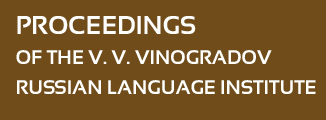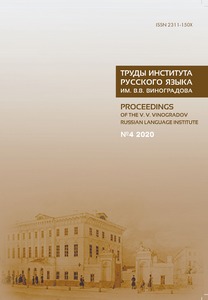THE INPUT UNITS IN THE NEW RUSSIAN PARALANGUAGE DICTIONARY IN THEIR RELATIONS TO SEMANTIC INFORMATION ABOUT THESE UNITS
Abstract:
The paper aims to describe the structure and content of the entries of the dictionary of Russian paralanguage. The entries are units of different classes and types including some interjections, paralanguage sounds and sequences of sounds. To compare our dictionary with some of language dictionaries, which are close to paralinguistic dictionary the authors defined several characteristics of these dictionaries, both similar and different.
A dictionary entry contains diff erent zones. These are the zone of phonetic and graphic information, the semantic zone, illustrations, syntactic zone. A dictionary entry contains also some special zones — the zone of words generalizing paralinguistic information, commentaries, nomination of sounds and sound classes, the zone of gesture accompaniment of the paralinguistic unit and some others.
All sounds that determine Russian paralanguage units included into our dictionary have been divided into two large semantic classes. These are the sounds that belong to the animate world and the sounds of inanimate one. Both classes are divided into several subclasses. The article provides some illuminative examples of sounds of each of the subclasses.
The subclasses constitute semantic content of the dictionary and organize the information in it. The dictionary contains examples of polysemic and homonymy units. In the case of homonymy, signs that belong to different semantic classes are described in different places of the dictionary.


